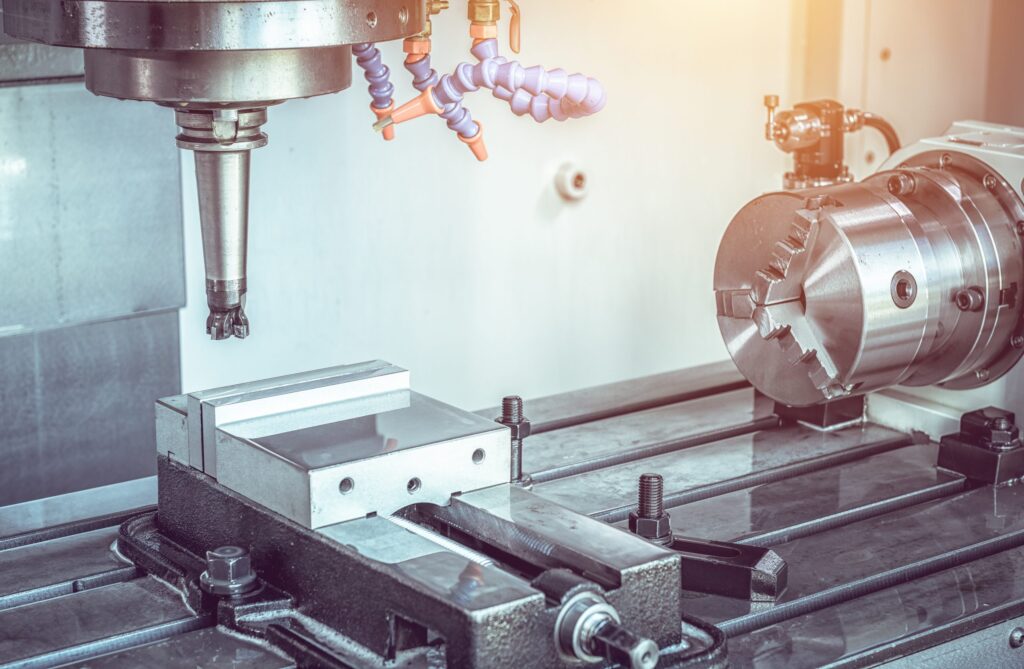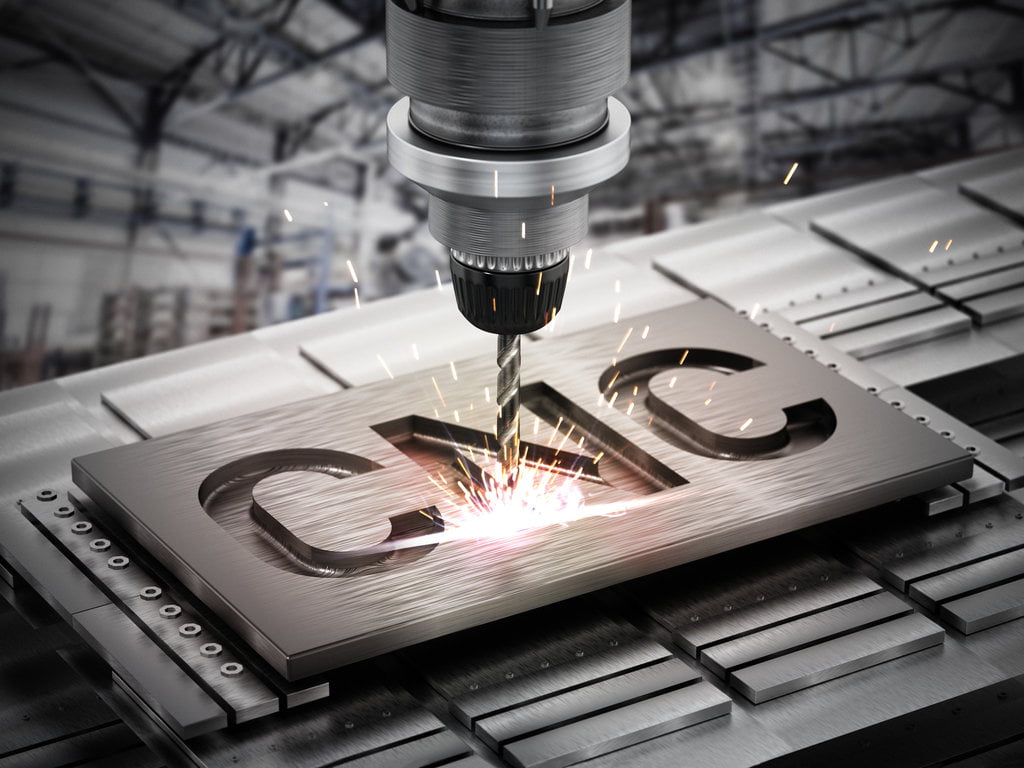Understanding the Fundamental Concepts of CNC
Computer numerical control (CNC) machining is a complex subject that can seem daunting to those just getting started. However, breaking down CNC into its basic building blocks makes it much more approachable and less intimidating. This post aims to provide introduction to CNC machining for the new CNC operators and students with a gentle introduction to the fundamental concepts that underpin CNC machining.
Table of Contents
What is CNC Machining?
CNC (Computer Numerical Control) machining refers to the use of computer software and hardware to control machine tools like lathes, mills, routers and more. Rather than an operator manually controlling the tooling and movements, a programmed computer numeric controller (CNC) executes the commands to cut away raw materials and manufacture components.
CNC allows for complex and precise operations to be carried out repeatedly in an automated fashion. This enables cost-effective mass production of consistent parts and also expands what was previously possible through traditional manual machining. Nowadays, CNC is widely used across many industries for prototyping, low volume production, and mass manufacturing applications.
To truly understand the underpinnings of CNC machining, it is important to understand its origins and evolution over time. CNC is built upon the foundations laid by previous pioneers of automated manufacturing. For a detailed look at the technological milestones and innovators that have shaped the path of CNC machining, check out our post exploring the full history and progression of the field. This article traces the rich tapestry of developments that have led to the sophisticated CNC systems used across industries today.
The Goal of this Post
The goal of this introductory post is to demystify CNC for those just starting their journey in this field. We will cover fundamental CNC concepts like essential terminology, understanding G-code programming, and an overview of common CNC machinery and processes. By the end, readers should have a solid grasp of the basics needed as a foundation for their CNC learning and skills.
It’s our hope that shiny new CNC operators feel empowered with a baseline knowledge of the underlying CNC principles. With a gentle introduction provided here, readers can progress forward confidently on more advanced CNC subjects and hands-on training. Let’s get started!

CNC Terminology for Beginners
Understanding basic CNC terminology is crucial for new operators. Let’s define some key terms:
Common CNC Terms
| Term | Definition |
|---|---|
| Spindle | The part of the machine that holds tools or workpieces. It rotates tools at high speeds. |
| Work zeros | The point of origin (0,0) in the coordinate system that specifies positions. |
| CNC controller | The “brain” of the CNC machine that runs G-code programs and directs machine actions. |
| G-code | The coded language that communicates instructions to the controller. |
| Toolpaths | The programmed movement paths for cutting tools. |
Other terms new operators should understand include:
- Feeds and speeds – The linear or rotational velocity of tools
- Tools – Cutters, drills and other tooling used
- Tool offsets – Values that compensate for tool dimensional errors
- Units of measurement – Typically inches or mm
- Machine limits – Maximum travel distances of machine axes
Mastering these fundamental CNC terms lays the foundation for further learning.
Understanding the Basics of G-Code
G-code is the most essential CNC concept for new operators to learn. It uses specific codes to define actions and numerical coordinates to specify positions.
READ MORE: Beginner’s Guide to G-Code: Understanding, Writing, and Troubleshooting
Common G-Code Commands
Some basic G-code commands include:
- G01 – Commands a linear move at the programmed feed rate
- G02 – Moves the tool along an arc in a clockwise direction
- G03 – Moves the tool along an arc in a counter-clockwise direction
- G90 – Sets the coordinate system to absolute mode

For example, the code G01 X1 Y2 would move the tool to the X1,Y2 position in a straight line. And G02 X3 Y4 I1 J0.5 would produce a clockwise circular cut.
Understanding just a handful of essential G-code commands unlocks the ability to start programming simple components and projects.
Getting Started with CNC Programming
Now that the foundation is laid, it’s time for some hands-on practice. Here are a few tips to help newcomers program their first parts:
- Choose an easy 2.5D design like etching your name or cutting basic shapes
- Properly define your zero point, tool offsets and machine limits
- Use primarily straight G01 movements and modest linear dimensions
- Keep your first programs very short with only a few statements
- Generate toolpaths in CAD/CAM and postprocess to G-code
- Follow all machine safety procedures without exception
With the basics mastered, more complex programs and techniques will follow. But stay focused on small, gradual steps forward at the start of your CNC journey.

CNC Machines and Processes
The two most prevalent industrial machine types are lathes and mills:
Lathes
- Used primarily for rotational work like tapering, grooving, threading
- Spindle holds the workpiece which rotates as a single tool cuts
- Example processes: facing, turning, parting, grooving
Mills
- Designed for planar work such as profiling, pocketing and drilling
- Tools mounted to heads/tables that move in X,Y,Z axes
- Common operations: drilling, pocketing, profiling, contouring
While machine structures differ, the fundamental CNC system remains the same. Carry safety practices with you between lathe/mill work. Start exploring the techniques most relevant to your workpieces.
Conclusion
We’ve now covered the key foundational CNC concepts outlined at the beginning of this post. By working through terminology, G-code fundamentals, basic programming techniques, and machine process types – new CNC operators should feel equipped with a solid grounding in these core topics.
Recap of Main Topics
- Common CNC terms and their definitions
- Essential G-code programming elements
- Getting started with simple CNC programs
- Understanding lathe vs mill machine functions
Next Steps
To continue progressing your CNC skills and knowledge:
- Try writing and running basic programs on demo software
- Find starter project models to run on training machines
- Study additional programming concepts in more depth
- Consider taking formal CNC training courses
- Refer to our other posts for more advanced techniques
Final Thoughts
Mastering CNC machining is a journey that takes time. But with the introduction provided here as your stepping stone, you now have the basic literacy to commence hands-on experience safely.
Feel confident exploring at your own pace, and never hesitate to revisit fundamentals as needs be. Wishing you the very best moving forward in this fascinating technical field. Happy machining!
And that wraps up our high-level tour of basic CNC machining concepts. Thank you for learning with us – now get out there and start programming!


